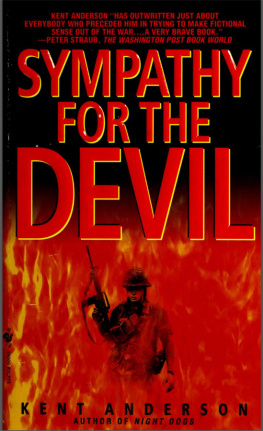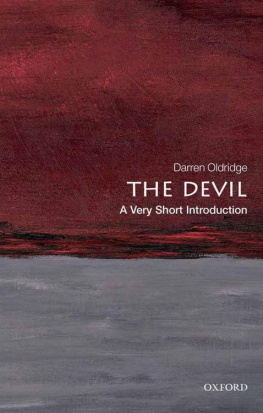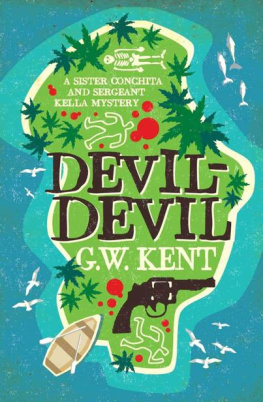
Tim Pratt, Neil Gaiman, Andy Duncan, Richard Butner, Charles de Lint, Holly Black, Stephen King, Natalie Babbitt, Sarah Zettel, Mark Twain, Elizabeth M. Glover, Charles Stross, Scott Westerfeld, Jan Wildt, James Morrow, Elizabeth Bear, Jay Lake, Jeffrey Ford, Robert Bloch, Michael Chabon, David Ackert, Benjamin Rosenbaum, Nick Mamatas, Robert Louis Stevenson, Kage Baker, Carrie Richerson, Kris Dikeman, Kelly Link, China Miville, Scott Bradfield, John Kessel, Theodore Sturgeon, Jonathan Carroll, David J. Schwartz, John Collier, Dante Alighieri
Sympathy for the Devil
Thanks to my publisher Jeremy Lassen for agreeing to let me turn my love of devilish things into a book, and to my agent Ginger Clark for expediting the deal. Many thanks also to the authors (and their representatives) who were kind enough to allow me to reprint their work. Special thanks to John Joseph Adams for giving me advice (both theoretical and practical) on the care and feeding of anthologies, and to the many readers and writers who suggested devil-related stories for me to consider-I wish I could have included more of them. And, as always, much love to my wife Heather Shaw for her support and help in carving out time for me to do projects like this.
And, most importantly: Thank you, Satan! I couldnt have done it without you.
Introduction by Tim Pratt
Im a big fan of the Devil.
I like stories about the Adversary in all his incarnations. Most of the stories in this book are about the Capital-D-Devil in his various guises, from the fiddle-playing trickster of Charles de Lints Ten for the Devil to the hard-nosed businessman of Carrie Richersons With By Good Intentions to the hitchhiking prankster of Jeffrey Fords On the Road to New Egypt to the mindless gnawing monster of Dantes Inferno.
There are funny devils (A Reversal of Fortune by Holly Black, The Power of Speech by Natalie Babbitt, Faustfeathers by John Kessel), scary devils (The Professors Teddy Bear by Theodore Sturgeon, The Price by Neil Gaiman) and just plain weird devils (Kelly Links Lull, Jonathan Carrolls The Heidelberg Cylinder, Richard Butners Ash City Stomp). There are classics here (That Hell-Bound Train by Robert Bloch, Thus I Refute Beelzy by John Collier, The Bottle Imp by Robert Louis Stevenson), and stories published within the last few years (Nine Sundays in a Row by Kris Dikeman, The King of the Djinn by David Ackert and Benjamin Rosenbaum). There are even a few deal-with-the-devil stories, though not as many as you might expect; I could have filled another book with the best of those easily, though.
There were a few narrative pairings I couldnt resist, like putting Stephen Kings The Man in the Black Suit next to Nathaniel Hawthornes Young Goodman Brown, the story King says inspired the piece. And consider the scientifically-savvy title character of Mark Twains Sold to Satan as compared to the scientifically-thwarted villain of Elizabeth M. Glovers MetaPhysics.
For the sake of variety I included a few edge cases-the Devil as seen through a glass darkly, say-like Michael Chabons dark oppositional deities in The God of Dark Laughter, the self-proclaimed Great Beast 666 (better known as Aleister Crowley, or Alick to his friends) in Summon, Bind, Banish by Nick Mamatas, and the mysterious furious unnatural force at work in China Mivilles Details. It seemed appropriate-after all, the Devil appears in many guises, from long-suffering employee of God to prideful fallen angel to pure malevolent force of nature to suave collector of souls.
When I first conceived of the idea for this anthology, I knew Id have no trouble filling the pages, because just about every writer of weird short fiction has taken a crack at the Devil at some point (even I have, though modesty forbade me including any of my stories here), and I had to leave out as many good stories as I put in. I dont have time or space to list all the great stories you should read, but Ill mention a few: The Playground by Ray Bradbury, where the Devil doesnt explicitly appear, though I personally think he must be the one making those dark deals beneath the swings and behind the merry-go-rounds; The Howling Man by Charles Beaumont, which was made into a classic Twilight Zone episode, but dont miss the original story; The Devil and Daniel Webster by Stephen Vincent Bent, which is so famous its been parodied on The Simpsons, but read it if you havent; both Natalie Babbitt collections about the Devil, The Devils Storybook and The Devils Other Storybook-it was hard deciding which of her short funny pieces to reprint here; The Screwtape Letters by C. S. Lewis, which is great reading even if youre not particularly interested in Christian apologia; Where Are You Going, Where Have You Been by Joyce Carol Oates, even though the author herself insists the character Arnold Friend is not precisely the Devil and Id better stop now, or Ill be here all day.
These 35 stories (and a chunk of a poem) only begin to illuminate the many facets of Satan, Lucifer, Shaytan, the Lord of the Flies, the Father of Lies, Old Nick, Mr. Scratch, the Tempter, the Old Serpent, the Lord of this World, Old Hob, the Prince of the Powers of the Air and Darkness, Mephistopheles, First of the Fallen and a Man of Wealth and Taste.
Turn the page, and allow him to introduce himself.
Tramps and vagabonds have marks they make on gateposts and trees and doors, letting others of their kind know a little about the people who live at the houses and farms they pass on their travels. I think cats must leave similar signs; how else to explain the cats who turn up at our door through the year, hungry and flea-ridden and abandoned?
We take them in. We get rid of the fleas and the ticks, feed them and take them to the vet. We pay for them to get their shots, and, indignity upon indignity, we have them neutered or spayed.
And they stay with us, for a few months, or for a year, or for ever.
Most of them arrive in summer. We live in the country, just the right distance out of town for the city-dwellers to abandon their cats near us.
We never seem to have more than eight cats, rarely have less than three. The cat population of my house is currently as follows: Hermione and Pod, tabby and black respectively, the mad sisters who live in my attic office, and do not mingle; Princess, the blue-eyed long-haired white cat, who lived wild in the woods for years before she gave up her wild ways for soft sofas and beds; and, last but largest, Furball, Princesss cushion-like calico long-haired daughter, orange and black and white, whom I discovered as a tiny kitten in our garage one day, strangled and almost dead, her head poked through an old badminton net, and who surprised us all by not dying but instead growing up to be the best-natured cat I have ever encountered.
And then there is the black cat. Who has no other name than the Black Cat, and who turned up almost a month ago. We did not realise he was going to be living here at first: he looked too well-fed to be a stray, too old and jaunty to have been abandoned. He looked like a small panther, and he moved like a patch of night.
One day, in the summer, he was lurking about our ramshackle porch: eight or nine years old, at a guess, male, greenish-yellow of eye, very friendly, quite unperturbable. I assumed he belonged to a neighbouring farmer or household.
I went away for a few weeks, to finish writing a book, and when I came home he was still on our porch, living in an old cat-bed one of the children had found for him. He was, however, almost unrecognisable. Patches of fur had gone, and there were deep scratches on his grey skin. The tip of one ear was chewed away. There was a gash beneath one eye, a slice gone from one lip. He looked tired and thin.
Next page













